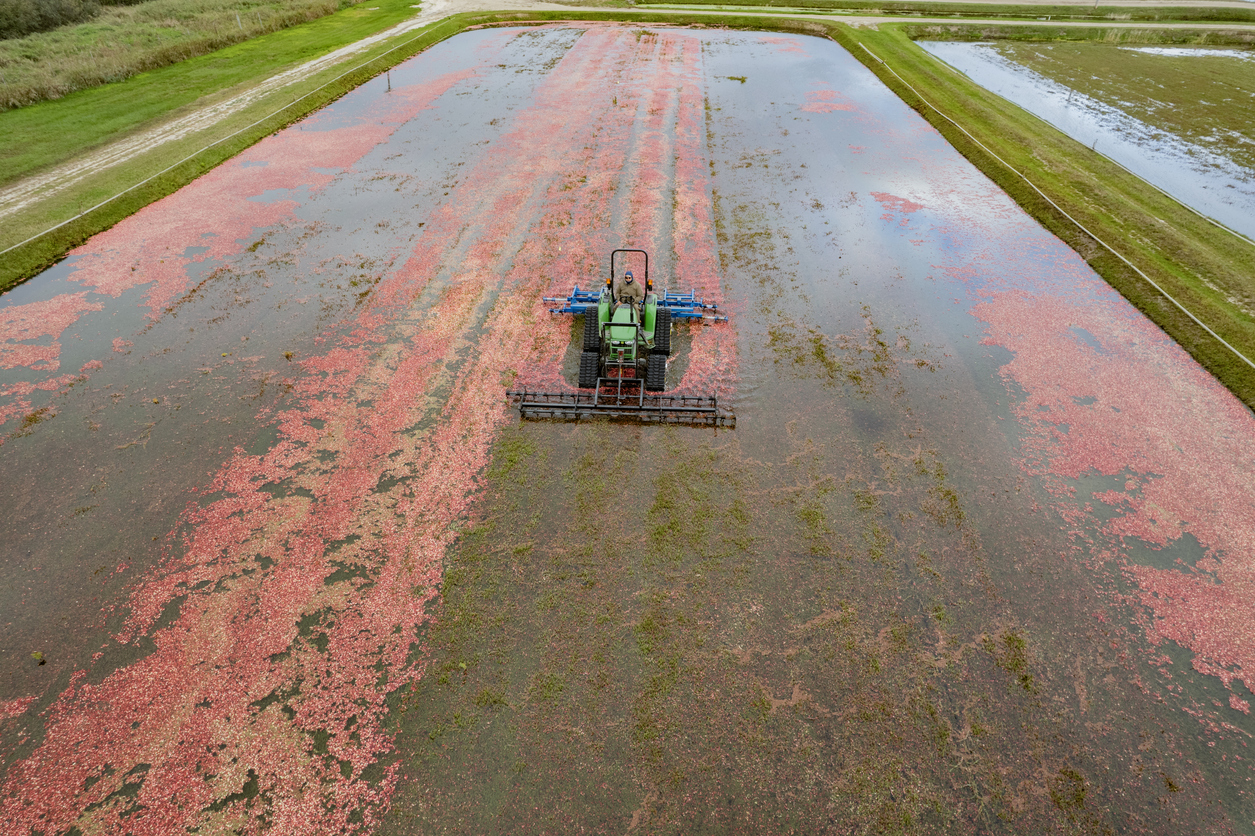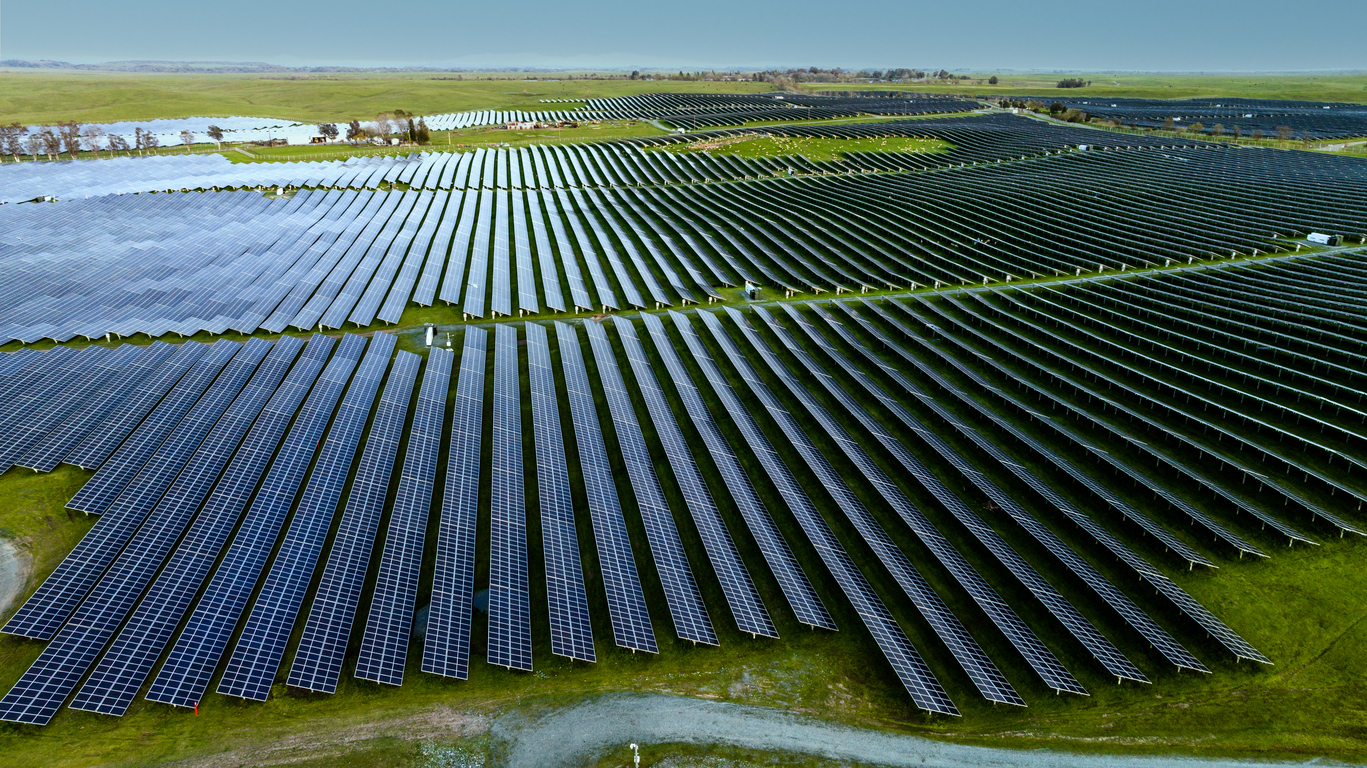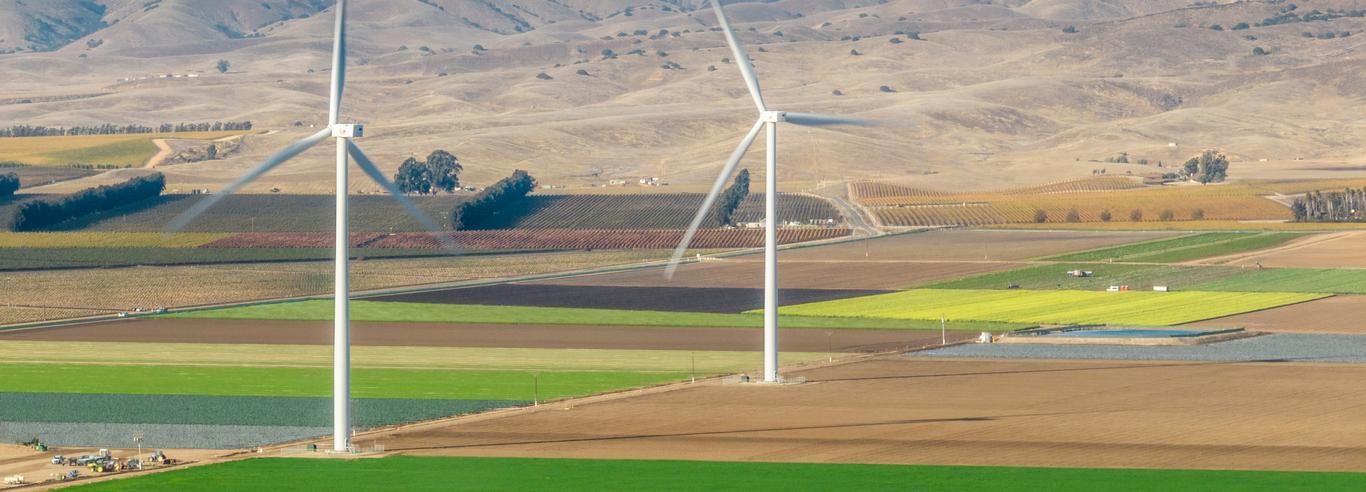
Q&A on How U.S. Climate Policy is Reshaping Agriculture
-
bookmark
-
print
When you think of the U.S. Inflation Reduction Act (IRA) of 2022, agriculture may not be the first thing to come to mind. Or even the second or third. Indeed, in the first three quarters of 2023, the IRA played a large role sending $176 billion of new investment towards clean energy, zero-emissions vehicles, building electrification and carbon management technologies.1
To add perspective, that amount already exceeds full-year 2022 investment in the same areas.
Yet, the IRA also appropriated nearly $40 billion for agriculture, forestry, and rural development, including programs focused on conservation, drought mitigation, and rural clean energy infrastructure. This represents a targeted opportunity for participants in the agriculture industry to tap into funding sources while advancing their energy transitions.
In support of BMO’s ambition to be its clients’ lead partner in the transition to a net-zero world, I asked my colleague Alma about the IRA’s key aspects relevant for the agriculture industry, why they matter, and what opportunities they bring in 2024 and beyond.
Why was it important for the IRA to have included agriculture provisions?
Agriculture contributed around $1.4 trillion to U.S. GDP in 2022, or 5.5% of the economy,2 while the sector is responsible for some 10% of total U.S. greenhouse gas (GHG) emissions.3 Meaningful climate action by the federal government should bolster private-sector efforts to adopt sustainable farming and regenerative agriculture practices.
Representing the largest investment in clean energy and climate action ever, the IRA is a significant part of U.S. climate policy.
It includes nearly $20 billion in funding for “climate-smart agriculture” through existing programs aimed at improving soil carbon; reducing nitrogen losses; or reducing, capturing, avoiding, or sequestering GHG emissions. Climate-smart agriculture is a concept used often by international policymakers. It describes “a set of agricultural practices and technologies which simultaneously boost productivity, enhance resilience and reduce GHG emissions,” according to the World Bank.
Among the agricultural areas targeted, the IRA provides $14 billion for rural development to support the development of renewable energy and infrastructure, and $4 billion to mitigate the impact of drought.

What impact is the IRA expected to have on conservation and the agriculture sector’s environmental impact?
The IRA has the potential to shape the way U.S. agriculture is practiced for years to come.
One of the main reasons why the law included agriculture provisions is because of the natural ability of soil to absorb and store carbon. The IRA aims to scale carbon sequestration practices, with investments expected by 2030 to result in around 40% of total emissions which can be used to offset against emissions stored in soil.4 Moreover, conservation practices supported by the IRA promote biodiversity, water conservation, and improve soil conditions (e.g., water holding capacity and drainage), while reducing dependence on pesticides—all of which can be advantageous for both large-scale and smallholder farms.
What opportunities does the IRA offer companies in the agriculture sector?
The IRA provides new and renewed funding for agriculture programs for large-scale and smallholder farms making changes to their operations to improve conservation efforts. Moreover, the IRA includes tax incentives for renewable energy and manufacturing.
For example, Section 22003 provides funding for biofuel infrastructure and market expansion. It also includes funding for working land grant programs to help producers implement climate-smart agricultural practices. These programs are relevant to any food producer and agriculture company that has programs focused on resource and land conservation, climate risk mitigation, energy efficiency, renewable energy, and nutrient management.
There are funding opportunities available in 2024 and beyond, as the programs are still ramping up. Program applications are usually handled at the state level and deadlines vary. However, implementation of conservation programs with IRA funding must be finalized by September 30, 2031.
In California, for example, demand for agriculture programs has been particularly strong. An opportunity that will remain available in 2024 is the Rural Energy for America Program (REAP), which provides guaranteed loan financing and grant funding to purchase energy efficiency equipment, such as solar panels and anaerobic digesters, install renewable energy systems or to make energy efficiency improvements involving agricultural production and processing. The REAP attracted 94 applications from California alone, representing a total funding request of more than $31 million.

What are the agricultural business risks that the IRA helps address?
In addition to trying to reduce the agriculture industry’s carbon footprint, the IRA directs funding to bolster business resilience against weather hazards, such as floods, droughts, and wildfires, occurring with more frequency because of climate change. Its programs cover practices such as cover crops, smart grazing systems, and deep-rooted perennial crops among many others.
The IRA also has agricultural provisions to help distressed farmers. It includes more than $3 billion to support distressed USDA borrowers as well as assistance for companies with agricultural operations at financial risk. The provision is aimed at helping farmers and businesses recovering from pandemic disruptions made more intense by climate-driven natural disasters.
Where can people find more information about IRA opportunities for agriculture?
While many of the agriculture programs are administered at the state level, this digest provides an overview of federal programs related to the IRA and also to the Bipartisan Infrastructure Law.
The window of opportunity remains open thanks to the IRA. Most of the law’s agriculture-related program funding will be available in the next several years.
1 Rhodium Group and Massachusetts Institute of Technology’s Center for Energy and Environmental Policy Research (CEEPR). (2023). Clean Investment Monitor.
2 USDA ERS - AG and food sectors and the economy. (n.d.).
3 Sources of greenhouse gas emissions | US EPA. (2024, February 23). US EPA.
4 Total U.S. emissions before land sequestration were 697.4 million metric tons, according to the EPA. Chopra, N. (2023, May 2). Agricultural Provisions of the Inflation Reduction Act and Beyond - Kleinman Center for Energy Policy. Kleinman Center for Energy Policy.

Q&A on How U.S. Climate Policy is Reshaping Agriculture
Head, BMO Climate Institute
Melissa Fifield leads the BMO Climate Institute, a center of expertise accelerating climate solutions by bridging science, policy, finance and economics. She is a g…
Senior Advisor, Climate Modelling, BMO Climate Institute
Alma leads the Climate Institute’s economic analysis of low and zero emissions technologies and sector decarbonization roadmaps, as well as the cost-benefit o…
Melissa Fifield leads the BMO Climate Institute, a center of expertise accelerating climate solutions by bridging science, policy, finance and economics. She is a g…
VIEW FULL PROFILEAlma leads the Climate Institute’s economic analysis of low and zero emissions technologies and sector decarbonization roadmaps, as well as the cost-benefit o…
VIEW FULL PROFILE-
Minute Read
-
Listen
Stop
-
Text Bigger | Text Smaller
When you think of the U.S. Inflation Reduction Act (IRA) of 2022, agriculture may not be the first thing to come to mind. Or even the second or third. Indeed, in the first three quarters of 2023, the IRA played a large role sending $176 billion of new investment towards clean energy, zero-emissions vehicles, building electrification and carbon management technologies.1
To add perspective, that amount already exceeds full-year 2022 investment in the same areas.
Yet, the IRA also appropriated nearly $40 billion for agriculture, forestry, and rural development, including programs focused on conservation, drought mitigation, and rural clean energy infrastructure. This represents a targeted opportunity for participants in the agriculture industry to tap into funding sources while advancing their energy transitions.
In support of BMO’s ambition to be its clients’ lead partner in the transition to a net-zero world, I asked my colleague Alma about the IRA’s key aspects relevant for the agriculture industry, why they matter, and what opportunities they bring in 2024 and beyond.
Why was it important for the IRA to have included agriculture provisions?
Agriculture contributed around $1.4 trillion to U.S. GDP in 2022, or 5.5% of the economy,2 while the sector is responsible for some 10% of total U.S. greenhouse gas (GHG) emissions.3 Meaningful climate action by the federal government should bolster private-sector efforts to adopt sustainable farming and regenerative agriculture practices.
Representing the largest investment in clean energy and climate action ever, the IRA is a significant part of U.S. climate policy.
It includes nearly $20 billion in funding for “climate-smart agriculture” through existing programs aimed at improving soil carbon; reducing nitrogen losses; or reducing, capturing, avoiding, or sequestering GHG emissions. Climate-smart agriculture is a concept used often by international policymakers. It describes “a set of agricultural practices and technologies which simultaneously boost productivity, enhance resilience and reduce GHG emissions,” according to the World Bank.
Among the agricultural areas targeted, the IRA provides $14 billion for rural development to support the development of renewable energy and infrastructure, and $4 billion to mitigate the impact of drought.

What impact is the IRA expected to have on conservation and the agriculture sector’s environmental impact?
The IRA has the potential to shape the way U.S. agriculture is practiced for years to come.
One of the main reasons why the law included agriculture provisions is because of the natural ability of soil to absorb and store carbon. The IRA aims to scale carbon sequestration practices, with investments expected by 2030 to result in around 40% of total emissions which can be used to offset against emissions stored in soil.4 Moreover, conservation practices supported by the IRA promote biodiversity, water conservation, and improve soil conditions (e.g., water holding capacity and drainage), while reducing dependence on pesticides—all of which can be advantageous for both large-scale and smallholder farms.
What opportunities does the IRA offer companies in the agriculture sector?
The IRA provides new and renewed funding for agriculture programs for large-scale and smallholder farms making changes to their operations to improve conservation efforts. Moreover, the IRA includes tax incentives for renewable energy and manufacturing.
For example, Section 22003 provides funding for biofuel infrastructure and market expansion. It also includes funding for working land grant programs to help producers implement climate-smart agricultural practices. These programs are relevant to any food producer and agriculture company that has programs focused on resource and land conservation, climate risk mitigation, energy efficiency, renewable energy, and nutrient management.
There are funding opportunities available in 2024 and beyond, as the programs are still ramping up. Program applications are usually handled at the state level and deadlines vary. However, implementation of conservation programs with IRA funding must be finalized by September 30, 2031.
In California, for example, demand for agriculture programs has been particularly strong. An opportunity that will remain available in 2024 is the Rural Energy for America Program (REAP), which provides guaranteed loan financing and grant funding to purchase energy efficiency equipment, such as solar panels and anaerobic digesters, install renewable energy systems or to make energy efficiency improvements involving agricultural production and processing. The REAP attracted 94 applications from California alone, representing a total funding request of more than $31 million.

What are the agricultural business risks that the IRA helps address?
In addition to trying to reduce the agriculture industry’s carbon footprint, the IRA directs funding to bolster business resilience against weather hazards, such as floods, droughts, and wildfires, occurring with more frequency because of climate change. Its programs cover practices such as cover crops, smart grazing systems, and deep-rooted perennial crops among many others.
The IRA also has agricultural provisions to help distressed farmers. It includes more than $3 billion to support distressed USDA borrowers as well as assistance for companies with agricultural operations at financial risk. The provision is aimed at helping farmers and businesses recovering from pandemic disruptions made more intense by climate-driven natural disasters.
Where can people find more information about IRA opportunities for agriculture?
While many of the agriculture programs are administered at the state level, this digest provides an overview of federal programs related to the IRA and also to the Bipartisan Infrastructure Law.
The window of opportunity remains open thanks to the IRA. Most of the law’s agriculture-related program funding will be available in the next several years.
1 Rhodium Group and Massachusetts Institute of Technology’s Center for Energy and Environmental Policy Research (CEEPR). (2023). Clean Investment Monitor.
2 USDA ERS - AG and food sectors and the economy. (n.d.).
3 Sources of greenhouse gas emissions | US EPA. (2024, February 23). US EPA.
4 Total U.S. emissions before land sequestration were 697.4 million metric tons, according to the EPA. Chopra, N. (2023, May 2). Agricultural Provisions of the Inflation Reduction Act and Beyond - Kleinman Center for Energy Policy. Kleinman Center for Energy Policy.
Conference
May 15, 2024 | New York
Email UsYou might also be interested in
BMO Establishes new U.S. Wine Industry Partnership, Enhancing Offering for Wine and Spirits Industry
Transforming the Global Food System to Benefit Investors and the Planet

Food, Ag, Fertilizer, and ESG From BMO’s 18th Annual Farm to Market Conference
Private Equity Is Still in Risk-on Mode, but It’s Picking Its Spots
Global Food and Agriculture Trends and Outlook: BMO Hosts 18th Farm to Market | Chemicals Conference in New York
BMO Donates $2 Million to the University of Saskatchewan to Accelerate Research Critical to the Future of Food
North American Agriculture’s Role in Meeting the Global Food Insecurity Challenge – US-Canada Summit
Exploring the Physical and Transition Risks Facing Food and Agriculture
BMO Hosts World-Leading Farm to Market Conference for 16th Consecutive Year
The Future of Food & Agriculture: BMO Hosts World-Leading Farm to Market Conference for 16th Consecutive Year













